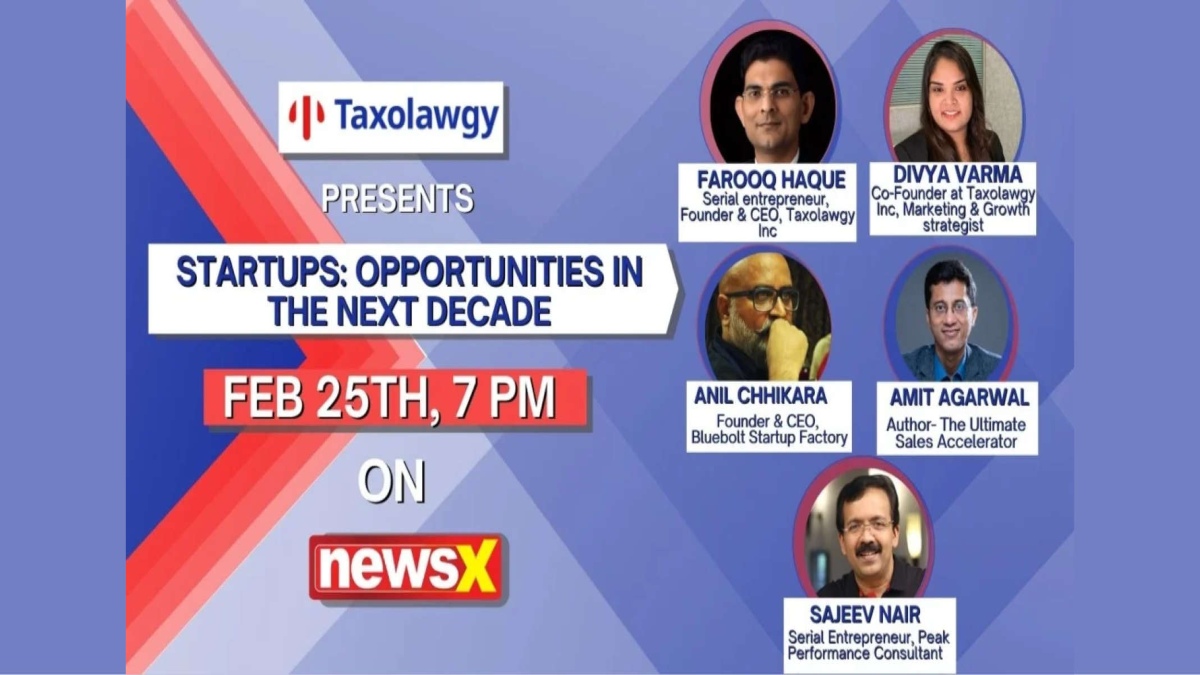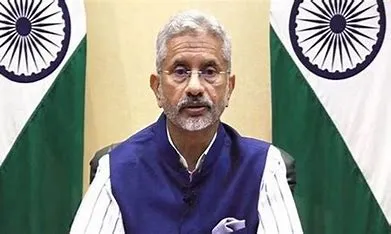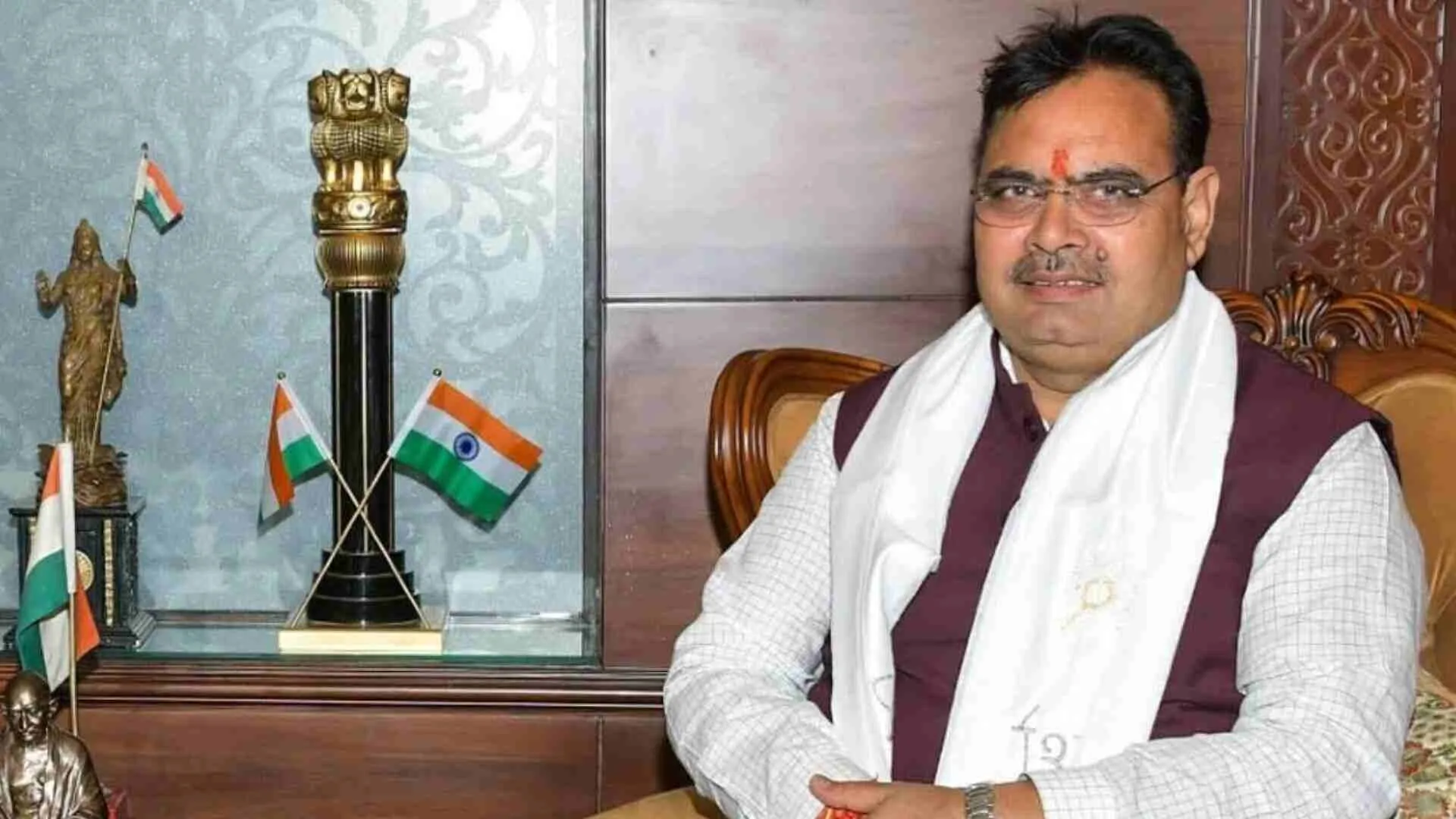Taxolawgy Inc presented an intriguing session on ‘Startups: Opportunities in the next decade’, which was joined by leading names from the startup world, including Anil Chhikara, Amit Agarwal and Sajeev Nair.
Moving towards an Aatmanirbhar Bharat, Taxolawgy Inc on Thursday, presented a session on ‘Startups: Opportunities in the next decade’. Eminent leaders from the startup world including CA Farooq Haque, Serial Entrepreneur, Founder & CEO- Taxolawgy Inc; Divya Varma, Co-founder at Taxolawgy Inc, Marketing & Growth Strategist; Anil Chhikara, Founder & CEO, Bluebolt Startup Factory and Founder of Startup India Foundation; Amit Agarwal, author of ‘The Ultimate Sales Accelerator’; and Sajeev Nair, Serial Entrepreneur, Peak Performance Consultant joined the panel.
Charting the course for new-age entrepreneurship, especially in the new normal, Farooq in his opening remarks said, “The new normal is not about changing your destinations but rather changing your path and journey to reach the same destination.” Emphasising how the division between taking a job and or starting your own venture has blurred over the years, he added, “When I became a CA more than 25 years ago, there weren’t many opportunities out there. Either you went into the job industry or started your own practice. Then came the startup revolution around 10-12 years ago which gave a new opening to the young entrepreneurs out there who had the entrepreneurial mind and advantaged from the startup culture in terms of funds, mentorship, and the help they needed. But the new normal that we are witnessing now is a complete game-changer. That iron wall that existed earlier between the job industry and entrepreneurship is now completely broken. I would take this liberty to coin the new definition of freelancing, that is ‘entrepreneurial workforce’. Freelancing is not like a job since you are not on the payroll of the company, you are an entrepreneur developing something of your own in the work domain. This is going to be a game-changer in the forthcoming decade.”
Speaking about the growth of freelancing during and after the pandemic, Divya said, “The pandemic has proved to be a blessing in disguise for the freelancing industry. As the world went into lockdown, the only thing that survived or rather thrived was remote working and freelancing. Employers are re-evaluating budget and opting for a more flexible workforce. Even the employees are showing a growing interest in the independent world. Mac Berry, the founder of freelancers.com, has said and I quote, ‘While Covid-19 has been a trigger for upward-trending freelancer movement, this exponential growth can also be attributed to the strong demand for an individual to finally start their own freelance enterprise, work on their own terms, and supplement their income.”
Anil highlighted the development of the startup eco-system in India in the last decade. He said, “If we put in a time machine and send today’s young entrepreneurs 10 years back, they wouldn’t believe that India was where it was. Things that we almost take for granted were not there. If you look at Silicon Valley, they have gone through various upturns and downturns. The upturn is more important for an eco-system because of the downturn and what happens after the downturn. If you look at the history of Silicon Valley after every massive downturn much bigger companies have come back aligned to the new realities. The biggest change that happens during this is that the investors, mentors, and everybody that come into the ecosystem, are those who have been entrepreneurs before, have had success and failures. They have walked the path. I am happy to see in the last 10 years that the big change that has taken place is stakeholders, whether you are talking about accelerators, incubators, and even the government, today are running something like Invest India and Startup India, rather than putting ‘babus’ to run it. They are putting seasoned entrepreneurs who have been there, done that. The biggest example of this is Aadhar and UPI. I believe that the changes that happened in the last one year will outstrip the changes that have taken place in the last 10 years.”
When asked about how startups should plan their sales activity at the starting stage, Amit said, “There is a how part of sales and 4W part of sales. What I framed is a 4W and H framework of sales. Simply put, it is why are you selling, what are you selling, where are you selling, and who are you selling as well as how are you selling. In a lot of cases, I have seen that there is a lot of focus on the ‘H’, that is how part of sales. Startups should change that to focus on the first 4Ws. If startups start addressing these 4Ws, the ‘how’ part will automatically be optimised. There is a lot of literature on the ‘how’ part and less focus on the 4Ws.”
Elaborating how one can find out the scalability of a startup idea, Sajeev said, “We all know that one of the key factors we always count is the scalability of the concept. The question of how do you say whether your idea is scalable or not is purely based on the idea. Primarily because if you are coming out with an idea, there are many non-scalable business ideas. The basic question, which startup entrepreneurs should ask, is what is your idea. If you have to scale something, what is it that you are going to scale? You need to have a basic core element that you can scale up. When we start a business, we should be focusing very clearly on the element that can be scalable. There could be one or more elements that can be scalable. First, we should define the purpose, then design the products that meet the purpose after which we design the process that can take the products to meet the purpose. Followed by this, we find the people or the distribution channel through whom we can meet that purpose. When you are scaling up based on a purpose, you can gain success.”























